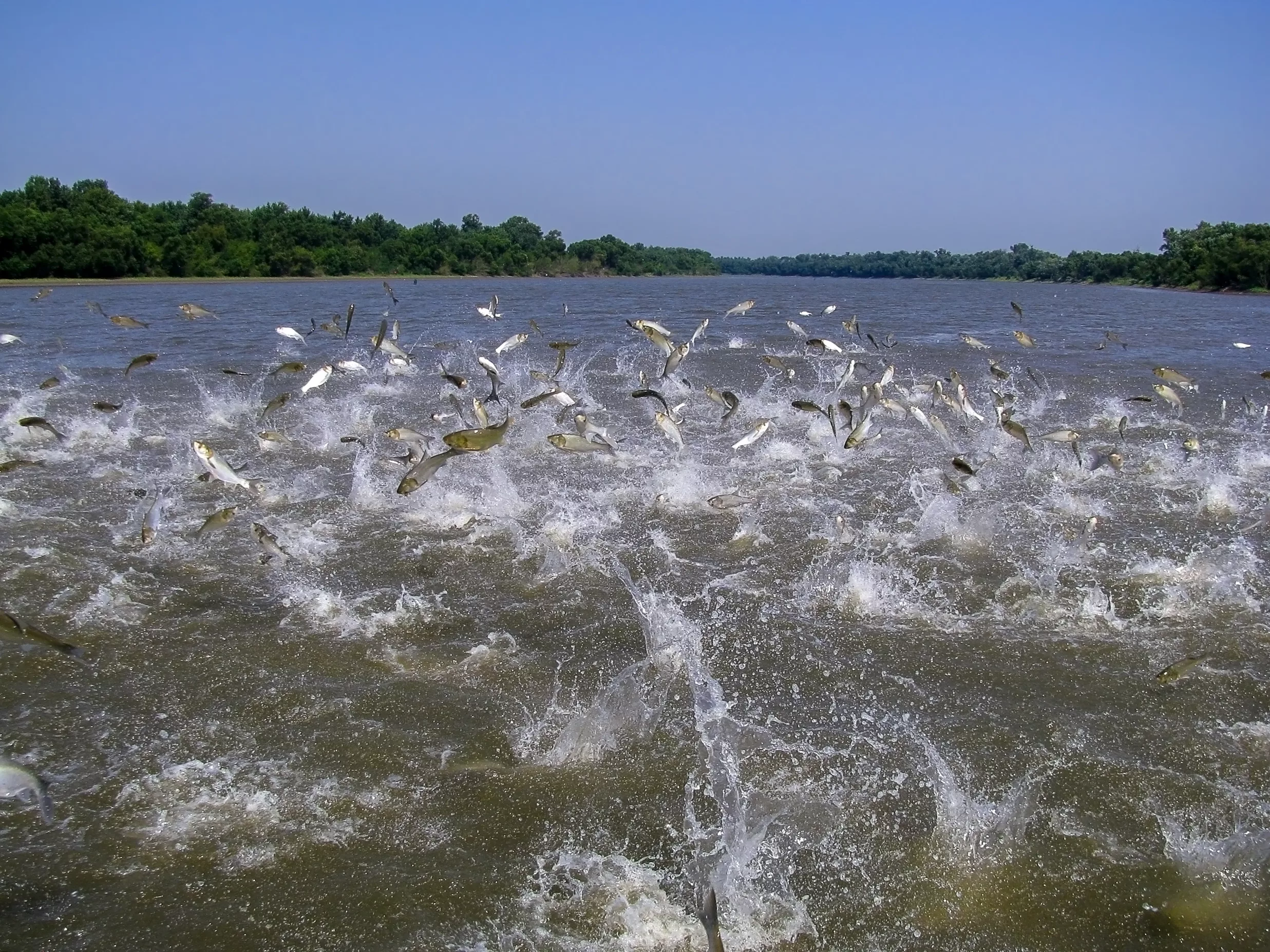Committee learns more about invasive carp in Kentucky

by LRC Public Information Office
FRANKFORT — Fish such as bass and blue gill are welcome in Kentucky’s waters. However, Asian carp, also called invasive carp, have had a devastating effect on the state’s economy, state lawmakers heard Thursday.
The Interim Joint Committee on Agriculture received updates from the Kentucky Department of Fish and Wildlife Resources about efforts to manage invasive carp in the commonwealth’s waterways.
Officials told the committee that invasive carp came from private ponds in Arkansas. The ponds flooded, allowing the fish to spread to tributaries and into Kentucky. They said that while the situation is improving, it’s vital to maintain momentum.
“We are not where we were three years ago, and I think we’re well down the road to addressing this situation being it is what it is,” said Fish and Wildlife Commissioner Rich Storm.
State, federal, and private partners have worked with the department since 2010 to obtain federal funds for battling invasive carp. Increased funding has allowed wildlife authorities to establish carp crews in Frankfort and Murray. The crews monitor their populations and assess their impacts on native species, along with other tasks.
Director of Fisheries Dave Dreves said the department’s invasive carp work seeks to completely eradicate invasive carp. However, it won’t happen in the near future.
“We know that’s probably not very likely anytime soon, and so what we can do is we can slow their expansion into new waters, and we can try to put together programs and amend regulations to try to assist the commercial fishermen to fish these populations down where they are present,” he said.
Efforts include an 8-cent per pound subsidy on invasive carp harvested from Kentucky Lake and Lake Barkley, all paid for with federal dollars. Wildlife authorities are also deploying bio-acoustic fish fences, which use sound and bubbles to create a barrier.
Storm said more of them would be beneficial and this needs to be addressed soon.
Rep. Daniel Fister, R-Versailles, said he’s been aware of the invasive carp for years.
“It first came to light for me when these fish were still in the Mississippi River and hadn’t gotten here, so I kind of watched it as it came along, and I really thank you all for being proactive and making lemonade out of an issue that could have been a whole lot worse,” he said.
Fister asked about the types of invasive carp and if the base problem is expanding.
Chris Wooldridge, director of the Center for Economic and Entrepreneurial Development at Murray State University, testified the four invasive species – bighead carp, silver carp, grass carp and black carp – have not expanded.
Rep. David Hale, R-Wellington, asked about the number of pounds of harvested invasive carp.
“Since 2013, we have harvested 50 million pounds or so. Now that we’re half way through the year, I’m just estimating we’ve probably got about five million pounds harvested this year so far,” Dreves said.
Sen. Gary Boswell, R-Owensboro, agreed that invasive carp are a serious problem and asked if shocking the fish is allowed.

“Right now, electrofishing is used by our federal and state resource agencies, but it’s not currently allowed for commercial use,” Dreves said. “The concerns are just about the non-target species being one and also safety issue is two.”
Sen. Jason Howell, R-Murray, and committee co-chair, said the invasive carp are more of a threat than people realize.
“This is a completely different animal literally and figuratively, and the impact that it has on the areas that get affected is devastating,” he said. “That sounds dramatic, but it’s not. The economic impact to our area in this already has been problematic, and it could get a lot worse if we don’t take these steps.”
Top photo: Asian carp. (Adobe Stock)
Recommended Posts

Kamala Harris needs a VP candidate. Could a governor fit the bill?
Fri, July 26, 2024
After cyber-attack on Jefferson County Clerk, Fayette counterpart discusses precautions
Fri, July 26, 2024
An eastern Kentucky animal shelter is swelling this summer
Fri, July 26, 2024